Yemen
Things to DO
Tarim
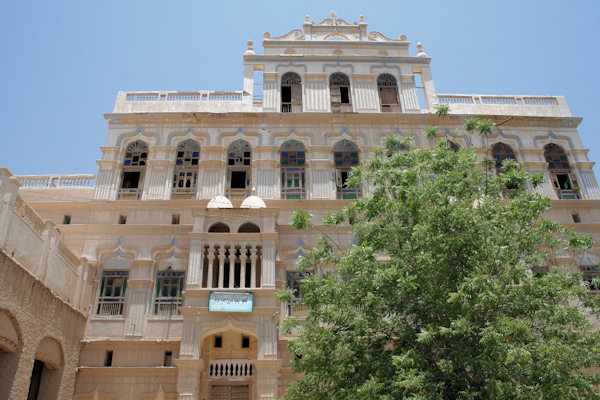 |
|||||
Tarim is famous for the quantity and quality of it's mud-brick palaces, built by emigrants of Indonesia and Singapore.
The huge palaces they built in this Javanese Baroque style are now in various stages of decay.
The finest palace is Al-Kaf Palace built by As-sayed Omar bin sheikh al-Kaf.
In the centre of town yoy can find the al-Muhdhar Mosque, wich is named after the religious leader Omar Al-Muhadhar bin Abdul
Rahman Al-Saqqaf, who lived in tarim in the 15th century AD. Rebuilt in 1914, this mosque is the symbol of the town. Its
50-metre-high square minaret, built of mud brick, is the highest minaret in Southern Arabia.
In 951 AD Sayyid Ahmad ibn Isa al-Muhajir, a descendant of the prophet Muhammad, came here, out of Iraq with 80 families and
settled in the eastern part of Wadi Hadhramawt, establishing Shafa'ism in the region.
The Tomb of al-Muhajir is still an important place of pilgrimage, and the town of Tarim has remaind the centre of Safa'i teaching.
Al-Mukalla
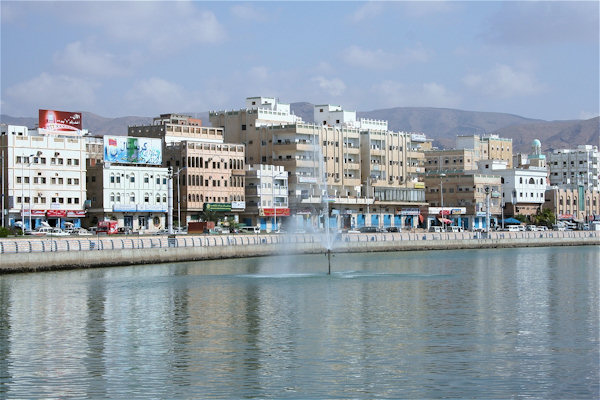 |
|||||
The most impressive sight in Al-Mukalla is the coastline of the old town, a chain of white houses, built next to the waterfront,
squeezed between the sea and hudge volcanic mountains.
Al-Mukalla is one of Yemen's most important ports, and became an important local power in the 8th century AD.
This area was part of Oman until the middle of the 11th century, and later this area became part of Yemen. After witnessing a struggle
for control by the Kathiri and Qu'aiti Sultanates in the 19th and 20th centuries, it became the capital of the Qu'aiti State
of Hadhramaut, and then in 1967, it became a part of South Yemen.
Well worth a visit is the new fish-market in the western part of the town.
On the road to Ar-Riyan, topping an impossing cliff, Husn al-Ghuwayzi, a tiny fortress is a perfect example of the bizarre
imagination of the Yemeni architect. It was built in 1884 and is irresistible to any visitor with a camera, even if you can't visit
the military museum it houses.
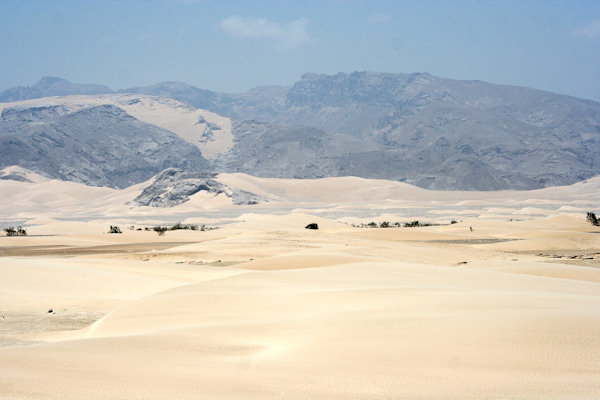 |
|||||
A senic coastal road streches west of Al-Mukalla. Sand dunes sometimes invade the road and countless "sambuqs" (traditional
wooden sailing vessel) can be seen at the sea.
Just beyond the village of Bir'Ali, around 128 km southwest of Al-Mukalla, you'll come to a side road marked with yellow signs that
snakes to the base of a volcanic outcrop at the very edge of the sea with a crater Lake called "karif shawran".
This is the ancient site of Quana, the old port of the Hadramawt. Wine jars ("amphorae") dating back to the 1st century AD
were discovered, in an underwater excavation along the shores of the Indian Ocean. On one of the jars is inscribed a word in the
Palmyrene (Tadmori) alphabet and a word in Syriac script. The conclusion drawn by researchers, is that from the mid-1st century AD wine was
imported from Italy and Syria and transported by ship to trade centers in Arabia, Ethiopia and India.
Ataq
 |
|||||
Ataq is described by Lonely Planet as "not at all like an inland Yemeni town"; other publications have described it
"as Beau Geste" in appearance and "completely different" and surrounded by desert.
Military camps are located in the western part of the city and becourse of that it wasn't allowed to take pictures in town.
Due to the the tribal tensions currently in the area we had to pas a couple off roadblocks staffed by heavily armed soldiers.
Habban, during the period of British influence, was a trading town of several thousand people. The British, who conquered Aden in
1839, made very few visits to the area and despite the presence of "air-fields" at nearby 'Ataq left political and military control of
the area to the local authorities.
The city had a Jewish community of 450 in 1947, which was considered to possibly be the remains of a larger community which lived
independently in the region before its decline in the 6th century. The Jewish community disappeared with the emigration of all of its
members to Israel in the 1950s
Rada'a
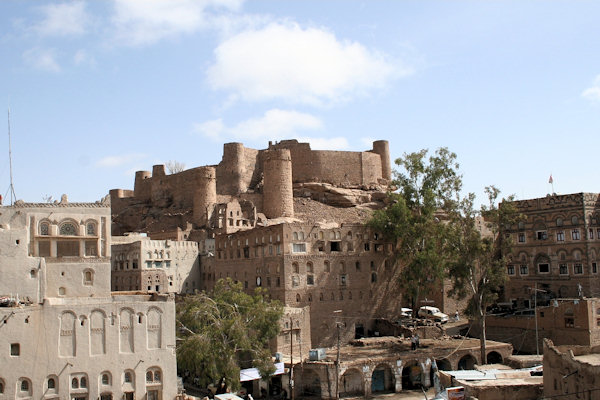 |
|||||
The construction of the Citadel of Rada'a precedes the introduction of Islam and dates back to the year 243 during the reign of
Shammar Yahri'sh, the Himyarite king.
In the beginning of the 20th century the citadel was restored during the time of Imam Yahya Hamid al-Din, who used the castle
as a prison for the rebels. Its status as a prison lasted until the 1990s.
The Amiriya Madrasa was commissioned bu Sultan Amir bin Abd al Wahab of the Banu Tahir Dynasty who ruled the southern
half of Yemen from 1489 to 1517.
They administered the port of Aden for the late Rasulid Sultans and became rich from the profits of the Indian Ocean Trade. Rada'a
was Sulatn Amir's favourite town, and he honored it by building the major monument of his reign there; it bears his name to this day.
The monument was in poor condition until 1978 when Iraqi-born archaeologist Selma Al-Radi saw it and enlisted financial help
from foreign missions to restore it in a more than twenty-year effort
Ibb
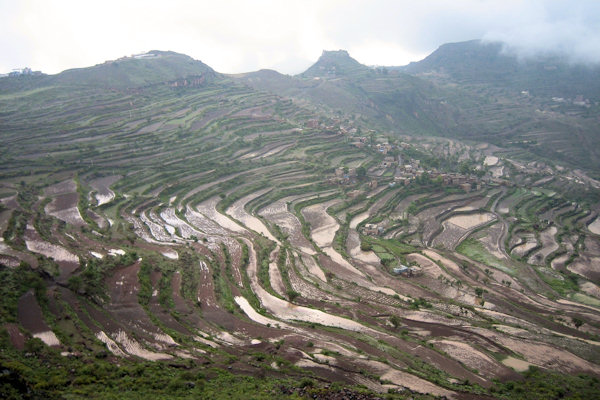 |
|||||
Owing to the way in which it captures the upper-level southwestern monsoonal flow during the months from April to October, Ibb
governorate is the wettest place in Arabia.
Because of its abundant rainfall, Ibb is known as "the fertile province". Almost the whole area of the governorate outside urban
centres is cultivated despite the steep terrain, and the number of crops produced is extraordinarily large for so small an area.
Sophisticated systems for management and storage of water from the seasonal rains allows extra crops to be grown during the dry season.
Ibb has been occupied since ancient times, and due to its strategical importance, the Ottomans used it as an administrative centre.
There is not a great deal to do in Ibb, but a wander along the streets of the old town is pleasant enough. The stone houses,
designed in a style unique to Ibb, are typically four to five storeys high, with facades decorated with geometrical friezes and circular
qamiriya (usuelly moon-shaped, stained-glass windows).
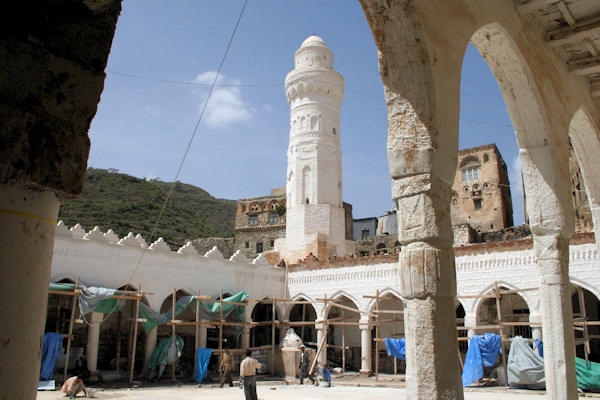 |
|||||
Situated 8km southwest of Ibb, Jibla is a stunningly set on top of a hilltop.
The town served as the capital of the Sulayhid dynasty in the 11th to the 12th centuries AD and was particularly prosperous under
its benevolent Queen Arwa, who built numerous mosques, schools, roads and bridges, many of which can still be seen today.
The town also became known as a centre for Islamic learning. The annex to Queen Arwa's Mosque still serves as a madrassa
Across the village from the mosque - and accessible through the narrow lanes of the souq - is the solitary minaret of the 16th century
Qubbat Bayt az-Zum Mosque.
Nearby, you can scramble over the crumbling Queen Arwa Al-Sulaihi Palace. The palace is today in a ruined state, although there
are efforts to restore it.
Ta'izz
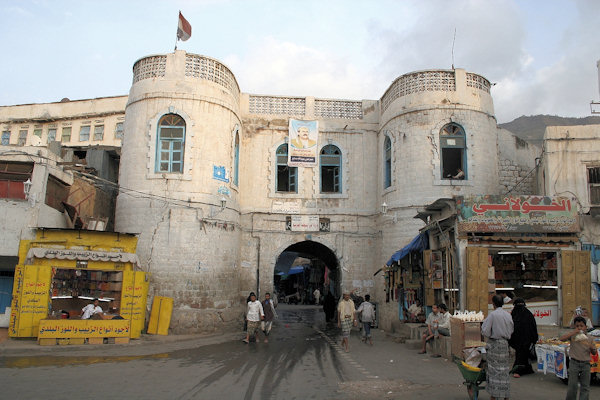 |
|||||
Long the site of a settlement, Ta'izz attained particular prominence when it became the capital of the Rasulid dynasty
from the 13th to the 15th centuries.
Bab al-Kabir is the main entrance to the old town, but only parts of the original 13m-high wall remain.
Well worth a wander, particulary in the early evening are the souqs spread aroun the gate.
Al-Janad Mosque is an ancient mosque located 20km southwest of Taiz. It is considered the oldest surviving and the first mosque
in Yemen built during the beginning of Islam, established by Muadh ibn Jabal who was sent by the Islamic prophet Muhammad
to Yemen to teach its people and the provisions regarding the religion and spend among them in accordance with Sharia in the year 6 AH
(585 AD).
The mosque has been renovated and restored for countless of times throughout the history
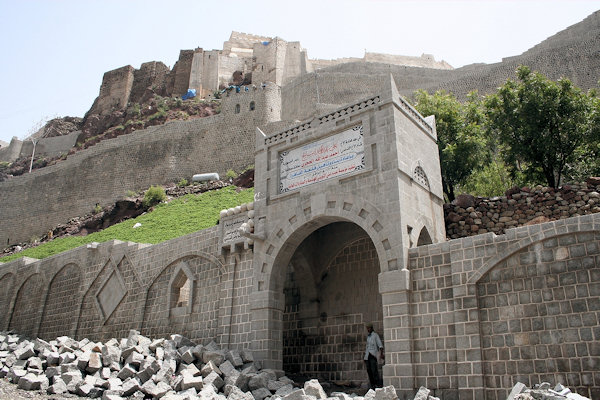 |
|||||
Qalat Al-Qahira is located on the northern slope of Mount Sabr, which is based on rocky highlands overlooking the city of Taiz.
The sultan of the Sulayhids Abd Allah ibn Muhammad al-Sulayhi commissioned the castle in the first half of the 12th-century and
it was expanded during the rule of his brother Ali ibn Muhammad al-Sulayhi.
the Al-Qahira Castle consists of two sections.
The first section is called "Al-Adina" and includes gardens constructed in the form of terrace built on the slope of the mountain.
Water vapor and basins are carved and built in one of the facades of the mountain, as well as the mansions scattered around it surrounded
by towers and parks.
The second part of the castle is referred as "the area of the Maghreb", and consists of a number of palaces, guard towers, grain
storage facilities and water reservoirs.
The wall of the castle reaches 120 meters hieight and thickness of four meters, and it contained rooms for servants and guardians, some
of which still remain today.
The project to restore al-Qahirah Castle was launched in 2002.